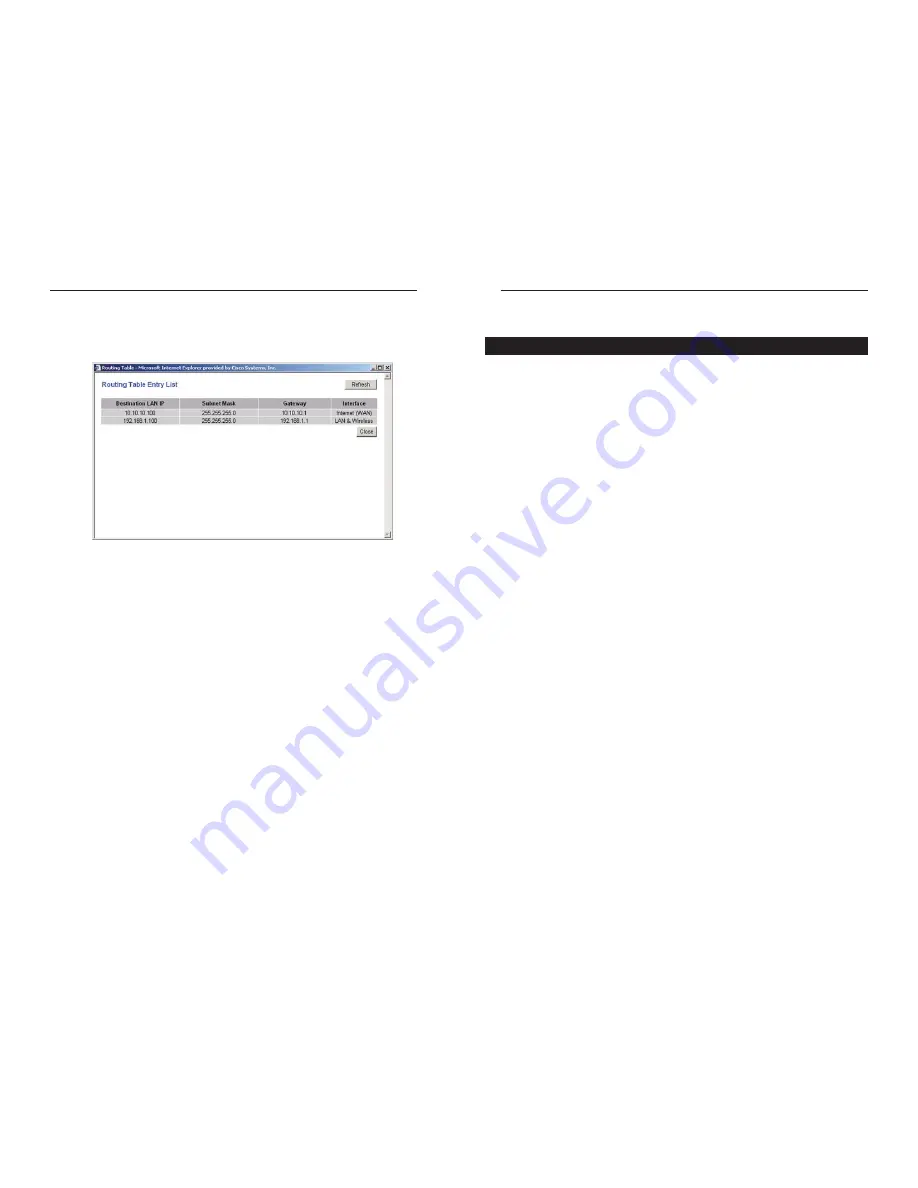
Dual-Band Wireless A/G Broadband Router
63
Appendix A: Troubleshooting
This appendix consists of two parts: “Common Problems and Solutions” and
“Frequently Asked Questions.” Provided are possible solutions to problems that
may occur during the installation and operation of the Router. Read the descrip-
tions below to help you solve your problems. If you can’t find an answer here,
check the Linksys website at
www.linksys.com
.
1. I need to set a static IP address on a PC.
You can assign a static IP address to a PC by performing the following steps:
For Windows 98 and Me:
A. Click
Start
,
Settings
, and
Control Panel
. Double-click
Network
.
B. In
The following network components are installed
box, select the
TCP/IP->
associated with your Ethernet adapter. If you only have one Ethernet adapter
installed, you will only see one TCP/IP line with no association to an Ethernet
adapter. Highlight it and click the
Properties
button.
C. In the
TCP/IP properties
window, select the
IP address
tab, and select
Specify an IP address
. Enter a unique
IP address
that is not used by any
other computer on the network connected to the Router. You can only use
an IP address in the ranges 192.168.1.2 to 192.168.1.99 and 192.168.1.151
to 192.168.1.254. Make sure that each IP address is unique for each PC or
network device.
D. Click the
Gateway
tab, and in the
New Gateway
prompt, enter
192.168.1.1
,
which is the default IP address of the Router. Click the
Add
button to accept
the entry.
E. Click the
DNS
tab, and make sure the
DNS Enabled
option is selected.
Enter the
Host
and
Domain
names (e.g., John for Host and home for
Domain). Enter the
DNS entry
provided by your ISP. If your ISP has not
provided the DNS IP address, contact your ISP to get that information or go
to its website for the information.
F. Click the
OK
button in the
TCP/IP properties
window, and click
Close
or
the
OK
button for the Network window.
G. Restart the computer when asked.
Common Problems and Solutions
62
Show Routing Table
Click the
Show Routing Table
button to view all of the
valid dynamic and static route entries in use (see Figure 6-29). The Destination
LAN IP address, Subnet Mask, Gateway, and Interface information are dis-
played for each entry. Click the
Refresh
button to display the most up-to-date
data.
Figure 6-29






























